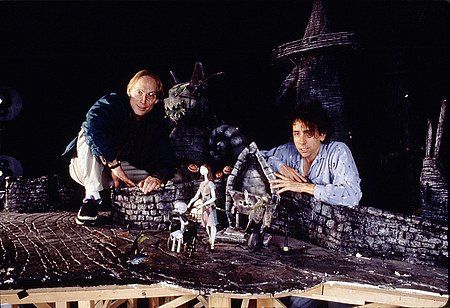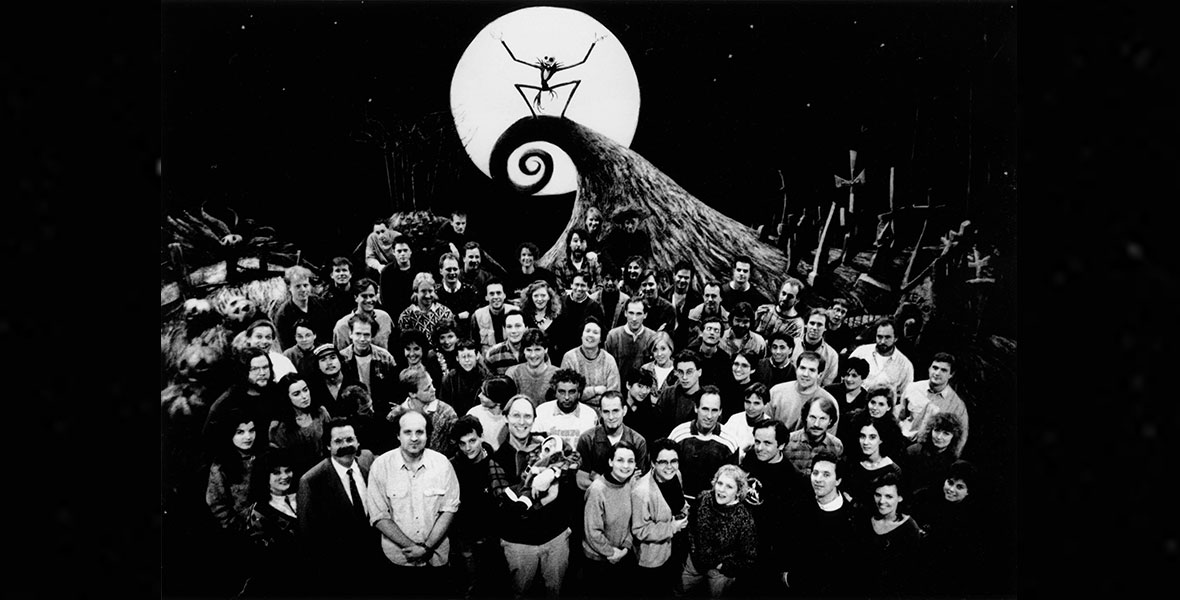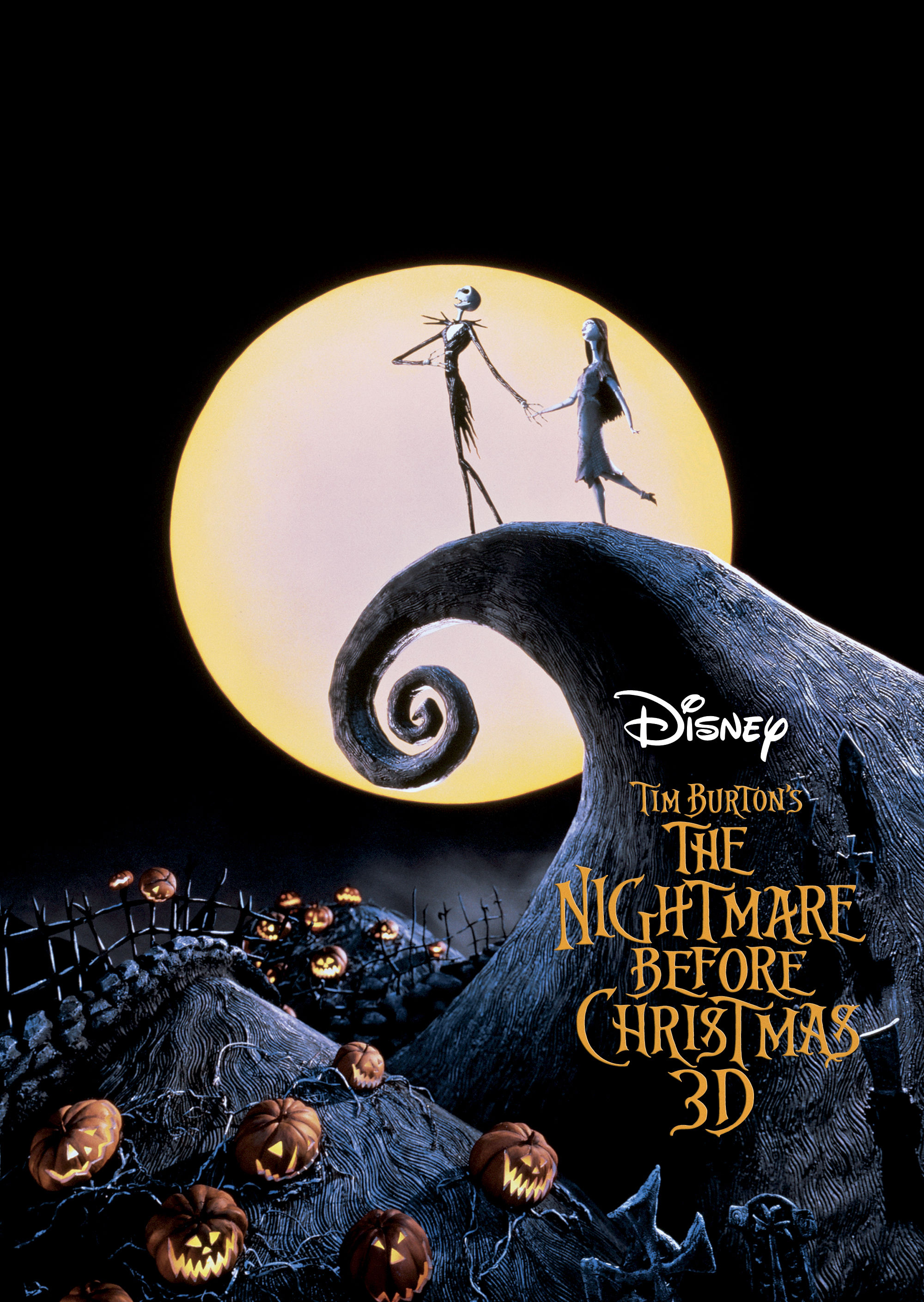Movie
When was Nightmare Before Christmas Made?
Before Christmas is not just a famous stop-motion animated film; it is also a revolutionary cultural icon of the 1990s. Released in 1993, the film is the result of the creative collaboration between director Henry Selick and producer/writer Tim Burton. The production history of the film dates back to July 1991 in San Francisco, showing that the process was anything but a simple task. The Nightmare Before Christmas is a masterpiece that has captivated audiences with its unique visual style and storytelling, and its lasting impact on the film industry and popular culture.
The Origins and Development of The Nightmare Before Christmas

The Nightmare Before Christmas has its roots in the creative minds of Henry Selick and Tim Burton, who worked tirelessly to bring the film to life. The production process for this stop-motion animated masterpiece was a lengthy and challenging one, lasting over two years from the initial conceptualization to the final release.
The Collaborative Efforts of Selick and Burton

The Nightmare Before Christmas was the result of a fruitful collaboration between director Henry Selick and producer/writer Tim Burton. Selick, known for his expertise in stop-motion animation, brought his technical skills and artistic vision to the project, while Burton, with his distinctive gothic and quirky sensibilities, contributed the story and overall creative direction.
The partnership between Selick and Burton was crucial to the success of The Nightmare Before Christmas. Selick’s meticulous attention to detail and his ability to bring the characters and sets to life through stop-motion animation complemented Burton’s imaginative storytelling and dark, whimsical style. The combination of their talents resulted in a film that was not only visually stunning but also emotionally engaging and intellectually stimulating.
The Lengthy Production Process
The production of The Nightmare Before Christmas was a lengthy and complex undertaking, taking over two years to complete. The film’s origins can be traced back to July 1991, when Selick and his team of animators and technicians began the arduous task of bringing the story to life.
One of the most striking aspects of the production process was the sheer amount of work required to create the film’s iconic stop-motion animation. Each frame of the film was meticulously crafted, with the characters and sets being painstakingly manipulated and photographed one frame at a time. This labor-intensive process was a testament to the dedication and skill of the production team, who worked tirelessly to bring their vision to the screen.
The production process was not without its challenges, however. The team faced numerous technical and creative obstacles, from developing the right techniques for animating the characters to ensuring the continuity of the story and the overall visual style. Despite these challenges, the team persevered, driven by their passion for the project and their commitment to creating something truly unique and groundbreaking.
The Lasting Impact of The Nightmare Before Christmas
The Nightmare Before Christmas has had a lasting impact on the film industry and popular culture. The film’s unique visual style, memorable characters, and compelling story have resonated with audiences worldwide, cementing its status as a beloved and iconic work of art.
One of the most significant aspects of the film’s legacy is its influence on the art of stop-motion animation. The Nightmare Before Christmas demonstrated the incredible potential of this medium, showcasing the level of detail, expressiveness, and emotional depth that could be achieved through the painstaking process of frame-by-frame animation. The film’s success helped to pave the way for a resurgence of interest in stop-motion animation, inspiring a new generation of filmmakers and animators to explore the possibilities of this art form.
Beyond its technical achievements, The Nightmare Before Christmas has also left an indelible mark on popular culture. The film’s quirky characters, such as Jack Skellington and Sally, have become instantly recognizable icons, inspiring a wide range of merchandise, fan art, and even Halloween and Christmas-themed celebrations. The film’s exploration of themes like identity, belonging, and the search for meaning have resonated with audiences, sparking ongoing discussions and interpretations.
The Enduring Popularity of The Nightmare Before Christmas

The Nightmare Before Christmas has maintained its popularity and relevance for decades, captivating audiences both old and new. The film’s unique blend of gothic aesthetics, memorable characters, and heartwarming storytelling have made it a beloved classic that continues to resonate with fans around the world.
The Film’s Enduring Appeal
One of the key factors behind the enduring popularity of The Nightmare Before Christmas is its ability to transcend genre and age boundaries. While the film is often associated with the Halloween season, its themes and visuals have a universal appeal that extends beyond the spooky and macabre.
The Nightmare Before Christmas masterfully blends elements of horror, fantasy, and romance, creating a cinematic experience that is both visually stunning and emotionally engaging. The film’s protagonists, Jack Skellington and Sally, are complex and relatable characters who grapple with issues of identity, belonging, and the search for purpose – themes that resonate with audiences of all ages.
Moreover, the film’s unique visual style, with its intricate stop-motion animation and Gothic-inspired aesthetics, has become an iconic part of its legacy. The Nightmare Before Christmas has cemented its place in popular culture, with its characters and imagery becoming instantly recognizable and inspiring a wide range of merchandise, fan art, and even Halloween-themed celebrations.
The Film’s Enduring Legacy
The Nightmare Before Christmas has not only captivated audiences but has also left a lasting legacy on the film industry and the broader cultural landscape. The film’s success has had a profound impact on the art of stop-motion animation, inspiring a new generation of filmmakers and animators to explore the possibilities of this unique medium.
The Nightmare Before Christmas has also played a significant role in shaping the public’s perception of Halloween and Christmas. By blending the two holidays in a visually striking and narratively compelling way, the film has challenged traditional notions of these celebrations and has encouraged audiences to embrace the more unconventional and subversive aspects of these festivities.
Moreover, the film’s exploration of themes such as identity, belonging, and the search for meaning have resonated with audiences, sparking ongoing discussions and interpretations. The Nightmare Before Christmas has become a cultural touchstone, inspiring a wide range of academic and critical analyses that delve into the film’s deeper meaning and its impact on our collective understanding of art, storytelling, and the human experience.
The Artistic and Technical Achievements of The Nightmare Before Christmas

The Nightmare Before Christmas is a remarkable achievement in the realm of filmmaking, showcasing the exceptional technical and artistic talents of the production team. From the meticulous stop-motion animation to the film’s distinctive visual style, The Nightmare Before Christmas stands out as a true masterpiece of the cinematic arts.
The Craft of Stop-Motion Animation
One of the most striking and defining aspects of The Nightmare Before Christmas is its use of stop-motion animation. This painstaking technique, in which each frame of the film is individually manipulated and photographed, was a labor of love for the production team, who dedicated countless hours to bringing the characters and their world to life.
The level of detail and craftsmanship evident in the stop-motion animation of The Nightmare Before Christmas is truly breathtaking. From the intricate movements of the characters to the intricate sets and props, every aspect of the film’s visual landscape was carefully considered and executed with meticulous attention to detail.
The animators responsible for bringing The Nightmare Before Christmas to life were true masters of their craft, employing a range of techniques and tools to achieve the desired effects. This included the use of sophisticated armatures, carefully sculpted character models, and innovative lighting and camera techniques to create the film’s distinctive visual style.
The Distinctive Visual Aesthetic
The Nightmare Before Christmas is not only a technical marvel but also a work of art that showcases the filmmakers’ exceptional visual storytelling abilities. The film’s distinctive Gothic-inspired aesthetic, with its dark, moody color palette and angular, expressionistic designs, has become an instantly recognizable part of its legacy.
The production team’s attention to detail in the film’s visual design is truly remarkable. From the intricate textures and patterns of the sets and costumes to the subtle facial expressions and body language of the characters, every element of The Nightmare Before Christmas has been carefully crafted to create a cohesive and immersive cinematic world.
The film’s visual style also plays a crucial role in its thematic and emotional resonance. The Gothic, Tim Burton-esque aesthetics of The Nightmare Before Christmas serve to heighten the film’s sense of darkness and mystery, while also highlighting the underlying themes of identity, belonging, and the search for meaning.
The Narrative Complexity and Emotional Depth
While The Nightmare Before Christmas is renowned for its technical and visual achievements, the film also boasts a narrative complexity and emotional depth that set it apart from many of its contemporaries. The story, developed by Tim Burton and the production team, is a rich and multilayered exploration of themes such as identity, belonging, and the search for purpose.
At the heart of the film’s narrative is the character of Jack Skellington, the Pumpkin King of Halloween Town, who finds himself longing for something more than the familiar rituals and routines of the holiday he’s sworn to uphold. Jack’s journey of self-discovery, as he stumbles upon the wonders of Christmas Town and struggles to understand his own place in the world, is a profoundly relatable and emotionally resonant narrative arc.
The Nightmare Before Christmas also features a diverse cast of supporting characters, each with their own unique personalities and motivations. From the whimsical and mischievous denizens of Halloween Town to the more benevolent inhabitants of Christmas Town, the film’s characters are richly drawn and deeply engaging, further enhancing the emotional impact of the story.
Moreover, the film’s exploration of the darker and more subversive aspects of the Halloween and Christmas holidays adds a layer of complexity and depth to the narrative. The Nightmare Before Christmas challenges traditional notions of these celebrations, inviting the audience to consider the more unconventional and unsettling elements that often lurk beneath the surface.
The Cultural Impact and Legacy of The Nightmare Before Christmas

The Nightmare Before Christmas has had a profound and lasting impact on popular culture, transcending its origins as a stop-motion animated film to become a beloved and iconic work of art. From its influence on the art of filmmaking to its enduring presence in the cultural consciousness, the film’s legacy continues to be felt in myriad ways.
The Influence on Stop-Motion Animation
One of the most significant legacies of The Nightmare Before Christmas is its impact on the art of stop-motion animation. The film’s stunning visual style and technical mastery set a new standard for the medium, inspiring a new generation of filmmakers and animators to explore the possibilities of this unique and captivating form of storytelling.
The Nightmare Before Christmas demonstrated the incredible potential of stop-motion animation, showcasing the level of detail, expressiveness, and emotional depth that could be achieved through this painstaking process. The film’s success helped to pave the way for a resurgence of interest in stop-motion animation, with many filmmakers and studios following in the footsteps of Selick and Burton to create their own visually striking and narratively complex works.
The impact of The Nightmare Before Christmas on the art of stop-motion animation can be seen in the numerous films, television shows, and other media that have been inspired by the film’s aesthetic and approach. From the whimsical and intricate worlds of Wes Anderson’s Fantastic Mr. Fox to the dark and twisted landscapes of Laika’s ParaNorman, the influence of The Nightmare Before Christmas is undeniable.
The Enduring Cultural Relevance
Beyond its technical and artistic achievements, The Nightmare Before Christmas has also left an indelible mark on popular culture. The film’s quirky characters, memorable music, and distinctive visual style have become deeply embedded in the cultural consciousness, inspiring a wide range of merchandise, fan art, and even Halloween and Christmas-themed celebrations.
The Nightmare Before Christmas has transcended its origins as a film and has become a cultural touchstone, inspiring ongoing discussions and interpretations. The film’s exploration of themes such as identity, belonging, and the search for meaning have resonated with audiences, sparking a deeper engagement with the work and its broader implications.
The Nightmare Before Christmas has also had a profound impact on the way we perceive and celebrate Halloween and Christmas. By blending the two holidays in a visually striking and narratively compelling way, the film has challenged traditional notions of these celebrations and has encouraged audiences to embrace the more unconventional and subversive aspects of these festivities.
The enduring cultural relevance of The Nightmare Before Christmas is a testament to the film’s enduring power and the way it has captured the imaginations of audiences around the world. Whether through its iconic characters, its unforgettable music, or its thought-provoking themes, The Nightmare Before Christmas continues to be a beloved and influential work of art that has left an indelible mark on the cultural landscape.
The Nightmare Before Christmas is a true masterpiece of cinematic art, a film that has captivated audiences for decades and left an indelible mark on the film industry and popular culture. From its origins in the creative minds of Henry Selick and Tim Burton to its lasting impact on the art of stop-motion animation and its enduring cultural relevance, The Nightmare Before Christmas is a testament to the power of storytelling, the beauty of craftsmanship, and the enduring appeal of the unexpected and unconventional.
As we reflect on the film’s legacy, it becomes clear that The Nightmare Before Christmas is more than just a simple Halloween or Christmas movie. It is a rich and multilayered work of art that challenges our preconceptions, invites us to explore the darker and more complex aspects of the human experience, and ultimately reminds us that true joy and fulfillment can be found in embracing our unique selves and the unexpected paths that life can take.
The Nightmare Before Christmas is a film that will continue to inspire and captivate audiences for generations to come, a timeless classic that has left an indelible mark on the world of cinema and the collective imagination of all who experience its magic.
